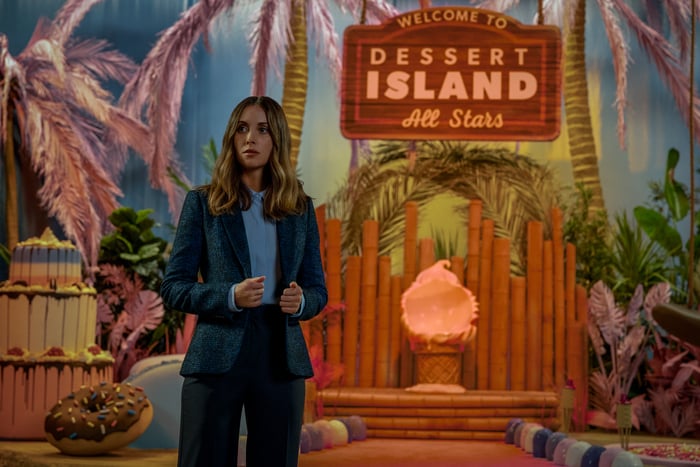I thought Dave Franco’s sophomore film “Somebody I Used to Know” would be a painful watch — until it wasn’t.
The film is quite strong in its writing, painting its protagonist, Ally (played by Alison Brie), as a complex character. Traditionally, her lead role in the film is one the audience would root for; you would want her to get with the love interest.
However, I was rooting against her.
At first, the film seems to follow the plot of a Hallmark movie made in the last decade. It’s a simple premise: Ally, a workaholic Hollywood executive producer, just had her reality TV show canceled. Bummed and burned out, she decides to take a trip to her tiny hometown in the Pacific Northwest for a break. There she runs into her ex-boyfriend Sean (Jay Elilis), who stayed planted there after their breakup a decade ago; old feelings resurface. She unknowingly attends his engagement party, where she meets his fiancée, Cassidy (Kiersey Clemons) — a younger, cool indie rocker.
From there it is a game of “Will she win him back?” As Sean and Cassidy question their marriage with each other, Ally crashes their wedding weekend party to get closer to Sean. By the end of the movie, Ally comes to realize that they aren’t meant to be with one another, and their past needs to stay in the past. Sean and Cassidy get their happily ever after.
Ally’s attempt to steal Sean away from his fiancée seemed entitled and pathetic. While leaving a relationship to go pursue her dreams in Hollywood was perfectly reasonable, she cannot expect to waltz back in and woo him back, especially given that he is engaged.
Nevertheless, Ally grows as the film progresses. Though initially jealous of Cassidy, she eventually comes to admire the woman’s drive as a musician. Cassidy initially does not trust Ally — for the right reasons — but they form a friendship, even going as far as taking an edible together and running naked through the woods.
Ally receives her karma in the end, and that’s what makes the film satisfying — while she improves as a character and discovers what she wants, she doesn’t get off the hook. When her efforts to sabotage the relationship early in the film eventually come to fruition, Ally comes clean to Cassidy. This effort ultimately saves Sean’s marriage and shows that the consequences are fair — Ally acknowledges her wrongdoings, yet it gives her a chance to find a different person to love.
In an exclusive college roundtable, Franco revealed how he underlined Ally’s transformation. Over the course of the story, she comes into her own as a filmmaker, boldly fulfilling her dream of making a nudist documentary. At the beginning and end of the film are two parallel shots of Ally hyping herself up before conducting an interview, but there is a stark contrast in how she treats the interviewees.
The first shot showcases her primp and polished, as she uses silence to manipulate the contestant into giving a juicy answer for reality TV. In the other, she appears nude alongside the nudists and uses silence to give them a safe space to open up. Franco uses the nudist community, usually the butt end of jokes, to underscore Ally’s growth.
“We used [nudity] as a metaphor. The movie starts with Alison’s character very buttoned-up and a little fierce,” Franco said. “And by the end of the movie, [her body] is all out for the world to see. This represents her becoming her purest self.”
The film does a great job of portraying the beauty and dignity of the Pacific Northwest environment and its residents. Alison Brie revealed in a separate roundtable that she, as the co-writer with Franco, chose the setting because she admired the nature there.
The film was also quite progressive in showcasing the multidimensional and diverse experiences of women. It showed different body types, armpit hair and stomach rolls to normalize different forms of beauty.
Some moments of the film were cheesy and corny — such as Ally walking in on her mom having sex multiple times and the montage of the day that Sean and Ally reunited. These felt too reminiscent of moments in other rom-coms. However, it was never cringeworthy enough to shut off. As the film progressed, so did the tension and the audience’s anticipation.
Overall, although the rom-com contains plot holes that could have been avoided, it inspires progressive discussions of gender, love and careers. The theme of balancing love with a passion is reminiscent of “La La Land,” but “Somebody I Used to Know” expanded on the conversation with a more concrete resolution.
Editor’s Note: This article is a review and includes subjective thoughts, opinions and critiques.
